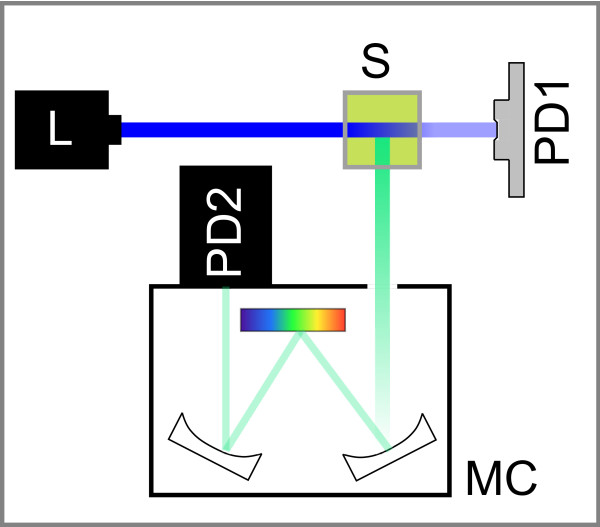Figure 4.
Proposed spectrophotometer with the capability to measure fluorescence intensity, absorbance, and scattering simultaneously. The excitation light source L can be a laser, a highly collimated light-emitting diode (LED), or a broadband source with selectable excitation filters. Excitation light is directed onto the sample S. Light that is not absorbed by the sample reaches the photodetector PD1, which can be a photodiode or a photomultiplier tube. The measurement of absorbed light against a blank sample provides total sample absorbance. Fluorescence emission is collected in a monochromator MC and can be spectrally resolved and analyzed in the second detector PD2, which needs to be a photomultiplier tube. Single-wavelength measurements are possible by using filters instead of a monochromator. Fluorescence collection uses the conventional L geometry, because the smallest amount of scattered light is found perpendicular to the excitation beam. However, a scattering sample causes a measurable amount of excitation light to be scattered into the monochromator, and by selecting the excitation wavelength, the amount of scattering can be determined. This device is similar to the one presented by Milich et al. [28].

